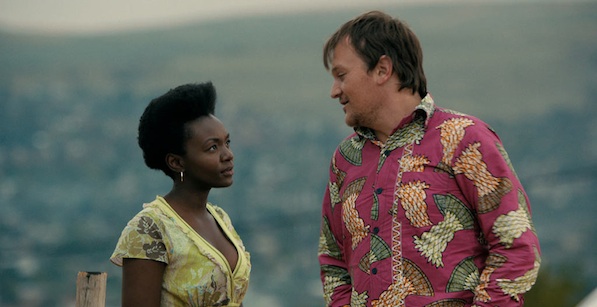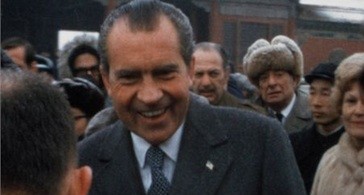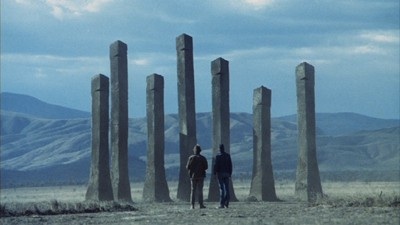The thirty ninth annual Seattle International Film Festival came to a close on Sunday, June 9, day twenty five of the marathon event, with the closing night film The Bling Ring, fresh from its debut at Cannes. Its two young stars, Katie Chang and Israel Broussard, were on hand to introduce the film and send the festival off to its gala closing night party.
Sofia Coppola has done marvelous work in ethereal studies of disconnection and emotional confusion, of people lost in their worlds or blinded by celebrity and affluence. The Bling Ring fits in very nicely thematically to her growing body of work, but these kids don’t actually yearn for anything beyond fashion accessories and the thrill of robbing the rich and famous and lack any capacity for self-reflection. The dispassionate observation, intercut with social media alerts and pop culture snaps and stories, makes them a reflection of that world without offering us a character underneath worth caring about, or at least fascinated with enough to follow through.
Like Toronto’s, SIFF’s top awards—the Golden Space Needles, this year designed by local artist and sculptor Piper O’Neill—are voted on by the audiences. This year, with plenty of high-profile American indies and international imports on display, the surprise Best Picture winner was the warm-hearted Fanie Fourie’s Lobola, a South African romantic comedy that explores racial and social tensions through laughs (I sadly missed this one; the final show conflicted with my own rare appearance on a festival panel). Director Henk Pretorius, accepting the award via phone, said he would change the title because nobody gets it right. First runner: The Rocket, an uplifting Australian drama shot in Laos.
Best Documentary was handed to Twenty Feet From Stardom, which casts a spotlight on the background singers and has been making a splash at festivals across the country since it debuted at Sundance earlier this year. It too is an audience pleaser in the best way, with superb music and performance clips, an excellent survey of the music industry from the perspective of the professionals in support of the stars, and five superb artists whose stories form the backbone of the narrative. While its clear-eyed look at the profession and the ranks of performers whose superior talents never translated to solo success is refreshing, it focuses almost exclusively on those aspiring to solo work without really showing those singers who find their niche in the ensemble. The Northwest-connected The Punk Singer, a portrait of the female punk pioneer and original riot grrrl Kathleen Hanna, came in as first runner up.
Nabil Ayouch was awarded Best Director for Horses of God (more on this below), James Cromwell elevated as Best Actor for the Canadian drama Still Mine, and Samantha Morton chosen as Best Actress for the Seattle-connected drama Decoding Annie Parker.
The Jury Prizes went to: Emir Baigazin as Best New Director for Harmony Lessons (Kazakhstan), Penny Lane‘s Our Nixon (USA) as Best Documentary, with a special jury prize to The Crash Reel, directed by Lucy Walker (USA); and C.O.G., directed by Kyle Patrick Alvarez (USA), as Best New American Cinema (chosen by a jury of FIPRESCI critics).
The complete press release, with runners-up and additional notes on the winners, can be found at the SIFF website.
SIFF received a grant from the Academy of Motion Picture Arts and Sciences to curate a program of African cinema and 2013 is the first year of the African Pictures sidebar. The eighteen-film was a success by any account, and delivered both the Best Picture and Best Director awards.
I viewed Horses of God from a screener rather than the festival showing, which was truly unfair to this dense story and ambitious production. I can only guess at the texture that director Nabil Ayouch got from the location shooting, capturing the squalor of shantytown slums that look more like an internment than a village. That’s surely how these young men must have felt, growing up in depravation with no real hope of escape apart from prison. This is no religious warzone, it’s an economic ruin, and Ayouch, who was inspired by the real-life 2003 terrorist bombings in Casablanca to make this film, shows all too clearly how such hopelessness, mixed with masculinity and pride, makes them ripe for recruitment to a terrorist cause.
Last Flight to Abuja couldn’t be more different. You could call it the Nollywood answer to Airport in a two-prop passenger plane and a cross-section of players in the modern Nigerian economy, but if it looks like a conventional disaster film/melodrama (albeit a lively and colorful one) to western eyes, it’s complex and sophisticated by Nollywood standards, made not for the direct-to-disc crowd but for the small but growing movie theater market. Director/producer/screenwriter Obi Emelonye delivers a bit of everything here: romance and marital conflict, comedy and crime, a murder, an affair, a little Nigerian star power (and it’s clear who the stars are simply by their confidence and command on the screen) and of course a crisis on an airplane. It was one of the biggest hits in the grown New Nigerian Cinema and SIFF presented the North American theatrical premiere.
The repertory offerings at SIFF are usually the highlight for me, but this year the only two classics I managed to see were in the final weekend. The new 2k restoration of Marcel Carné’s 1938 Le quai des brumes, a defining piece of poetic realism (and a precursor to the more tragic and tender American film noirs) with a wonderfully scuffed Jean Gabin as a deserter who falls in love with an eighteen-year-old Michele Morgan (who looks far more worldly than her years suggest), looked superb, with all that 1930s light and shadow preserved with real filmic texture in the digital projection.
And Saul Bass’s Phase VI, restored and screened on 35mm (with the newly discovered, and very trippy, alternate ending shown separately), isn’t so much a revelation as a reminder of the artist part of graphic artist of Saul Bass. You’ll believe that he actually directed the insects to a painstakingly exactly performance (better than some of the human performances, to be fair), but then that’s the design of the film and Bass is a master of design and ideas.







